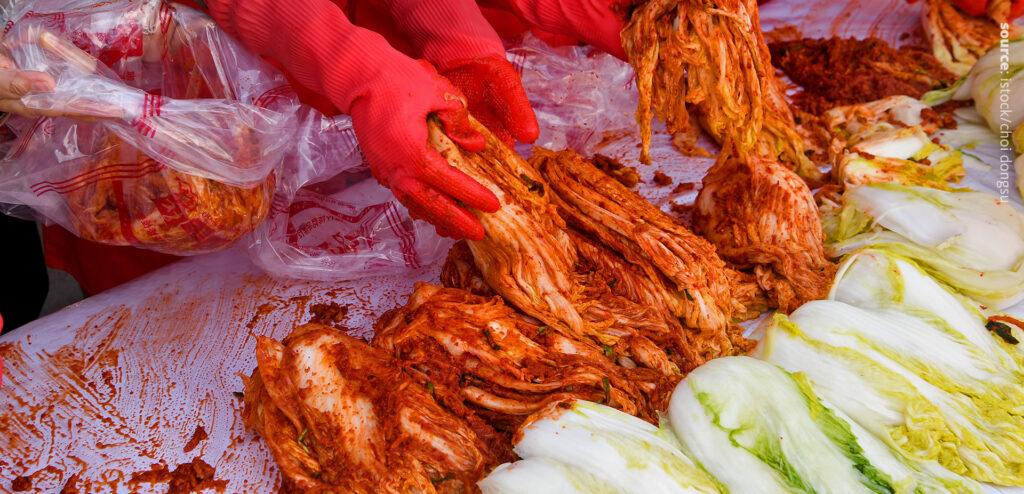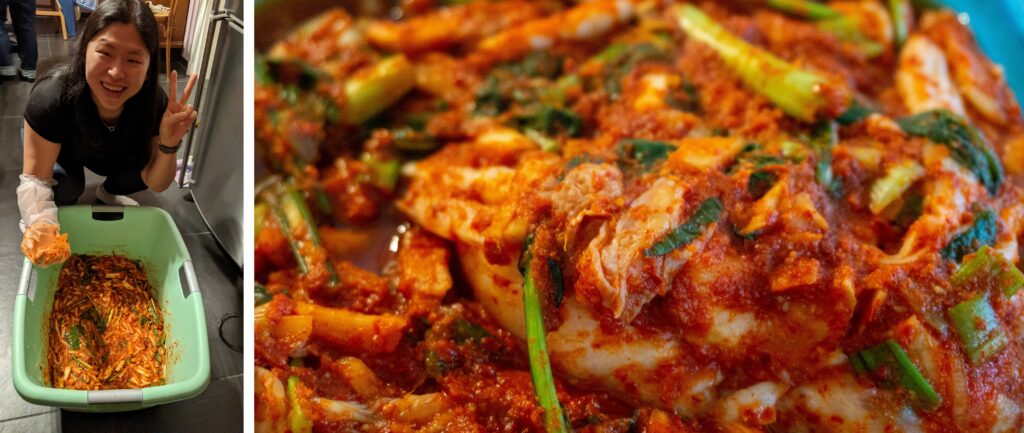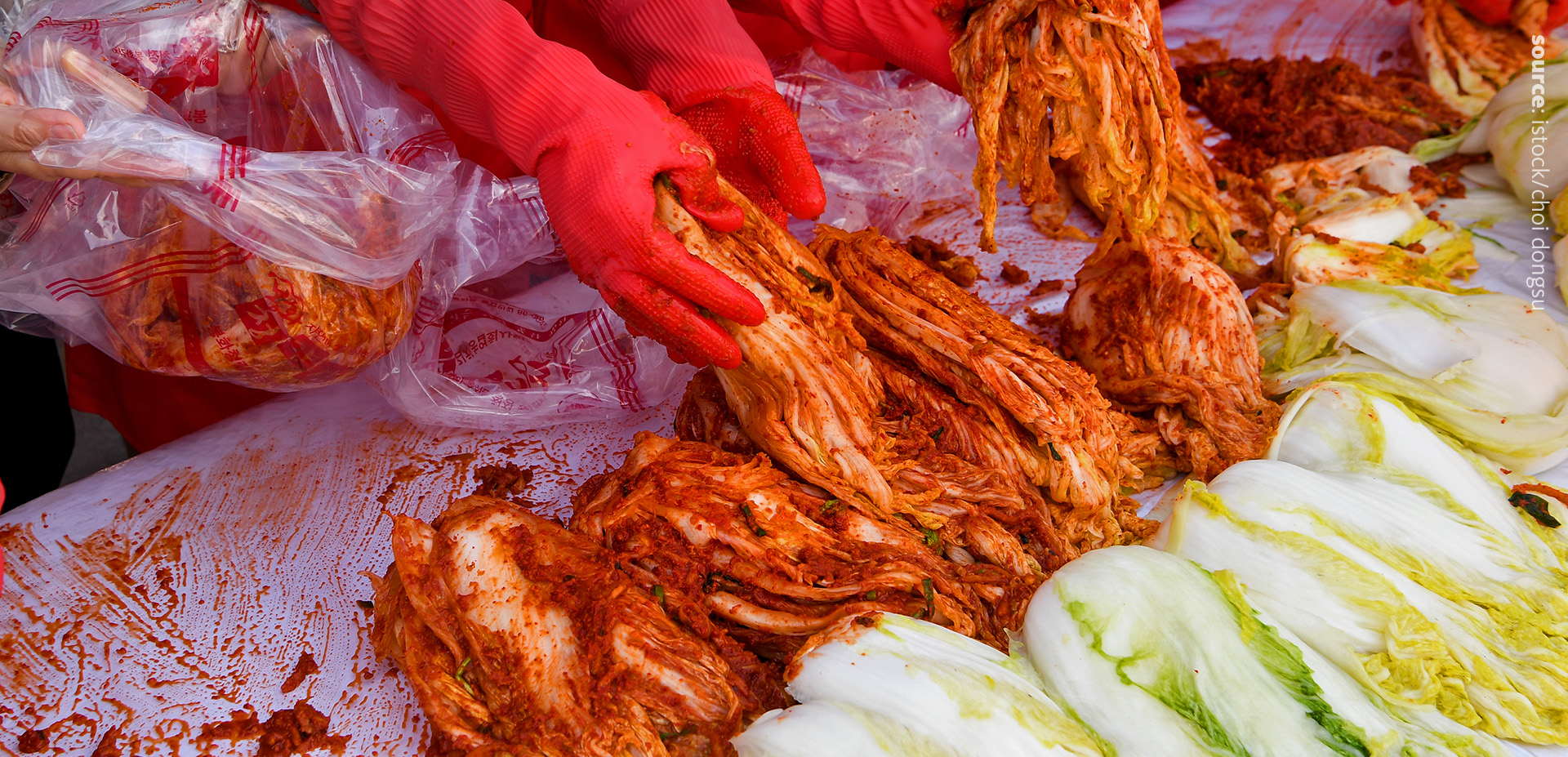If you haven’t tried kimchi yet, you’re missing out on a staple of Korean cuisine that’s gaining popularity worldwide! But for Jeongeun, a Korean native living in Germany, it’s not just the tangy, spicy taste of kimchi that she misses. Rather, it’s the culture of making and sharing Korean food that has her feeling nostalgic. Despite living abroad for years now, Jeongeun still yearns for the communal experience of preparing and enjoying this beloved dish with her loved ones.

Jeongeun Chae, Social Media Manager
“I used to miss Korean food itself a lot in the past, but these days I think I miss the culture of making and sharing Korean food more than the food,” says Jeongeun. That’s why she organized this kimjang party where Lipotypers can make kimchi on their own and share the cultural experience.

What is the difference between kimchi and kimjang?
Kimchi and kimjang sound very similar but they have distinct differences. Kimchi refers to the fermented vegetable dish that is a staple of Korean cuisine. Kimchi made with napa cabbage or radish is popular, but in fact, you can make kimchi with almost any type of vegetable. It is made by mixing vegetables with a variety of seasonings like fish sauce, garlic, ginger, and chili pepper flakes (gochugaru), and leaving it to ferment for several days or weeks – or even months!
Kimjang, on the other hand, is the process of making large quantities of kimchi. It usually takes place during the harvest season, late autumn. It is often that multiple families and communities come together to chop, season, and pack the vegetables into containers for fermentation. Kimjang is an important cultural event in Korea and was Inscribed in 2013 on the Representative List of the Intangible Cultural Heritage of Humanity.

Lipotype kimjang party
Jeongeun and her colleagues decided to host a Kimjang party to share this cultural experience with their colleagues and friends. They used 10 heads of napa cabbage, which is a popular vegetable used in kimchi, and red chili flakes, garlic, ginger, wheat flour porridge, and other ingredients to make about 20kg of kimchi.
The process of making kimchi involves a lot of preparation and hard work. The cabbage needs to be soaked in salt water to draw out moisture, then rinsed to remove excessive salt. The seasoning mixture is then applied to each leaf of the cabbage, and the cabbage is tightly packed into jars or containers to ferment for a few days. This process can take several hours or a whole day and requires a lot of hand work to massage the seasoning mixture into the cabbage.
Lipotypers successfully made a large batch of kimchi at their Kimjang party and were able to share this delicious and healthy food with their colleagues. They also gained a deeper appreciation for the traditional process of making kimchi and the hard work and dedication that goes into it.

Science behind kimchi
Kimchi is not only a savory delight but also an excellent source of several essential nutrients and health-promoting compounds. It is notably a rich source of probiotics that play a vital role in maintaining a healthy gut microbiome. Kimchi is also an abundant source of vitamins A, B, and C, as well as minerals such as calcium and iron. Moreover, the regular consumption of kimchi has been associated with various health benefits, including reduced cholesterol levels and a decreased risk of certain cancers.
In addition to its nutritional benefits, kimchi is an excellent source of Coenzyme Q10 (CoQ10), a powerful antioxidant that naturally occurs in the human body. CoQ10 is vital in the production of cellular energy and plays a critical role as an antioxidant, shielding cells from free-radical-induced damage. Studies have demonstrated that the consumption of foods rich in CoQ10, such as kimchi, can significantly improve cardiovascular health by reducing inflammation, lowering blood pressure, and improving symptoms of heart failure.
Interestingly, in the developed world, the average daily CoQ10 intake is estimated at 3-6 mg per day, mainly derived from meat. Conversely, South Koreans’ average daily CoQ (Q9 + Q10) intake is estimated to be 11.6 mg/d, mainly sourced from kimchi. This highlights the significant role that kimchi can play in providing optimal amounts of CoQ10 for individuals following a plant-based or low-meat diet.

What is CoQ10?
Ubiquinone or coenzyme Q10 is a small molecule that helps generate energy in cells. It carries electrons between certain parts of the cell’s energy-making process, which creates a proton gradient that produces ATP, the cell’s main source of energy. Coenzyme Q10 analysis is performed in research to better understand the role of this molecule in cellular processes and disease. For example, this analysis can be used in the diagnosis and management of certain medical conditions, such as mitochondrial disorders and heart disease.
